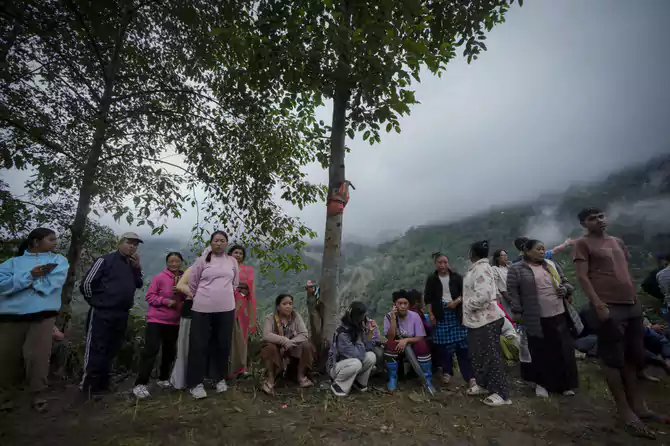Rescuers found more bodies overnight as they dug through slushy debris and ice-cold water in a hunt for survivors after a glacial lake burst through a dam in India’s Himalayan northeast, washing away houses and bridges and forcing thousands to flee.
Officials said the hundreds of rescuers recovered six more bodies early Saturday, bringing the death toll to 47. At least 150 people are still missing.
The flood began shortly after midnight Wednesday, when the waters of a glacial lake overflowed, cracking open the biggest hydroelectric dam in Sikkim state. The icy waters then cascaded through towns in the valley below, where it killed scores of people and carried some bodies kilometers (miles) away downstream, where they were found in the neighboring state of West Bengal and Bangladesh, police said.
Disasters caused by landslides and floods are common in India’s Himalayan region during the June-September monsoon season. Scientists say they are becoming more frequent as global warming contributes to the melting of glaciers there.
Police said nearly 4,000 tourists were stranded in two locations, Lachung and Lachen in the northern part of the state, where access was severely restricted as the floods had washed away roads. But the bad weather has made rescue efforts more challenging, with authorities unable to deploy helicopters to assist those stuck in vulnerable areas.
Some 3,900 people were currently in 26 relief camps set up by the state, Chief Minister Prem Singh Tamang said on Saturday. Out of the 23 Indian army soldiers who were earlier reported missing, one had been rescued and eight had died, Defense Minister Rajnath Singh said, adding that search operations were carrying on.
It wasn’t clear what triggered the deadly flood in the mountainous Sikkim state, the latest to hit northeast India in a year of unusually heavy monsoon rains. Nearly 50 people died in flash floods and landslides in August in nearby Himachal Pradesh state. In July, record rains killed more than 100 people over two weeks in northern India.
Experts pointed to intense rain and a 6.2 magnitude earthquake that struck nearby Nepal on Tuesday afternoon as possible contributors.
But the disaster also underscores a climate dilemma that pits local environmental activists who say dams in the Himalayas are too dangerous against authorities pursuing a national green energy agenda.
The design and placement of the 6-year-old Teesta 3 dam, the largest in Sikkim state, were controversial from the time it was built.—AP










